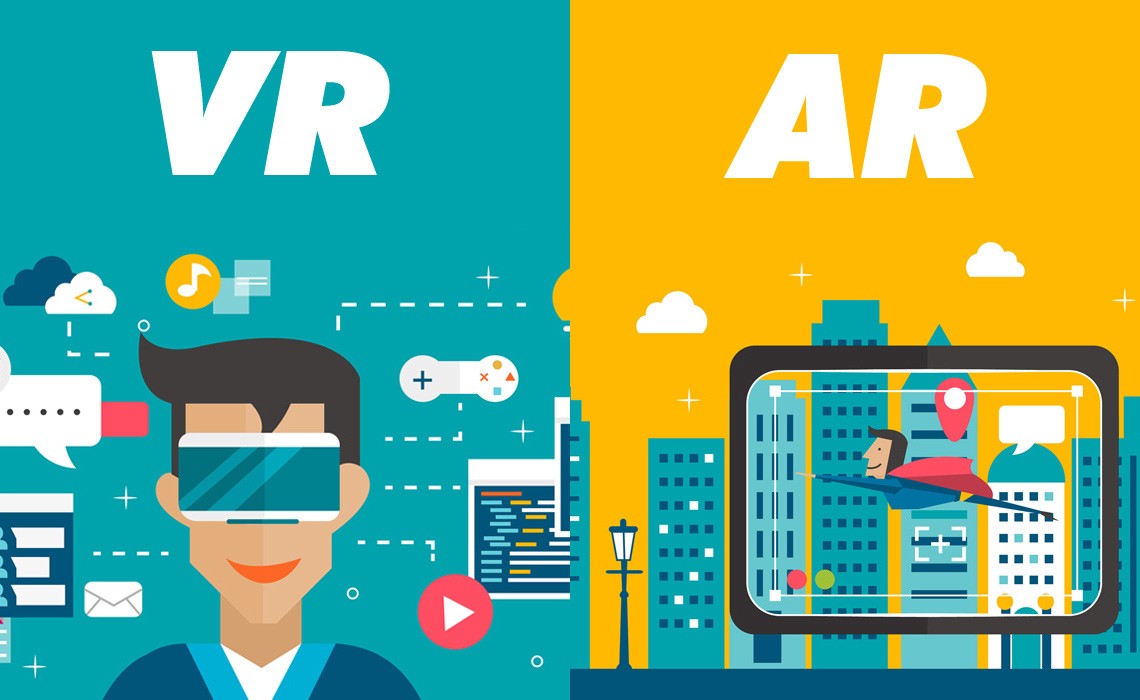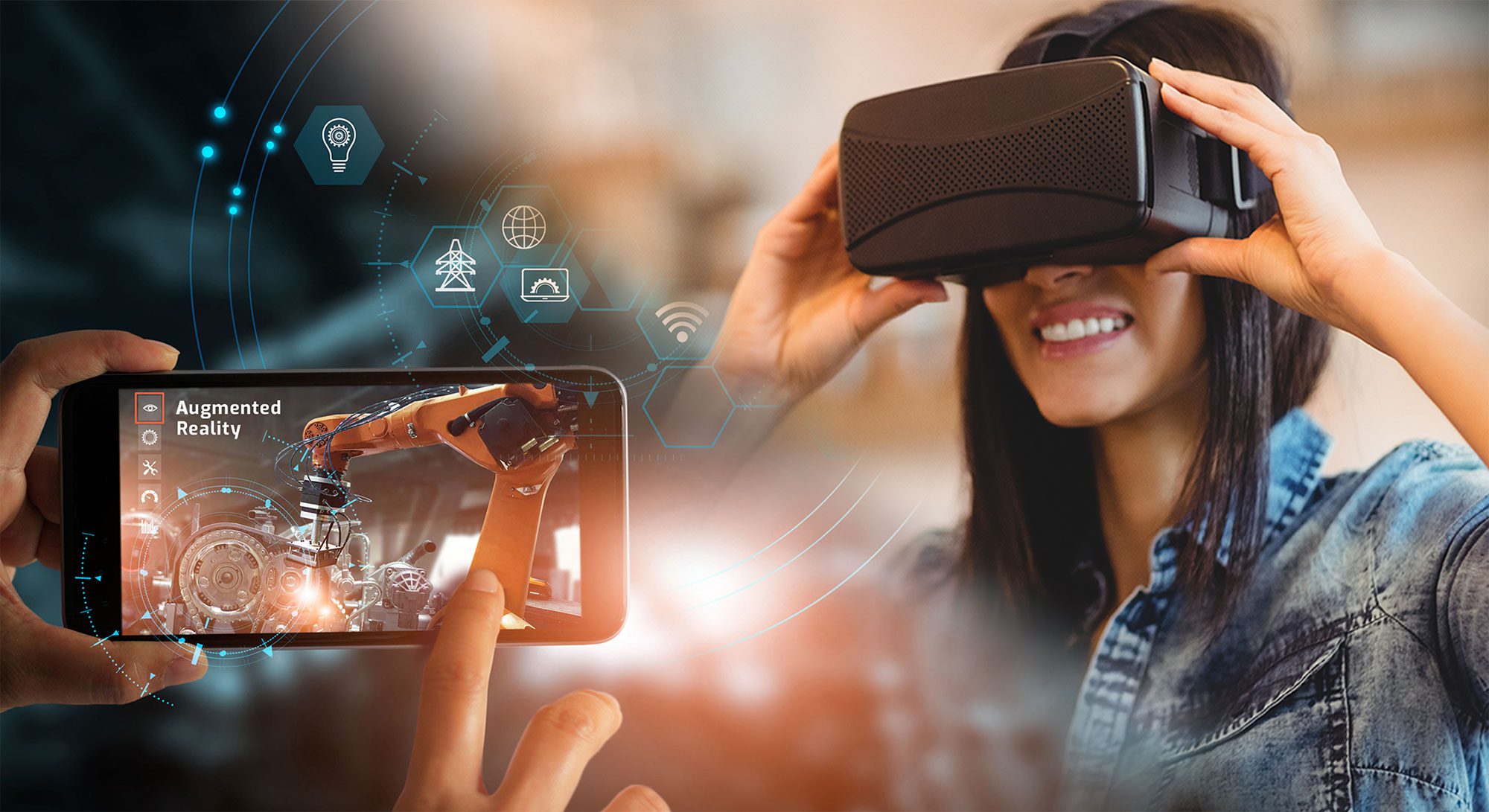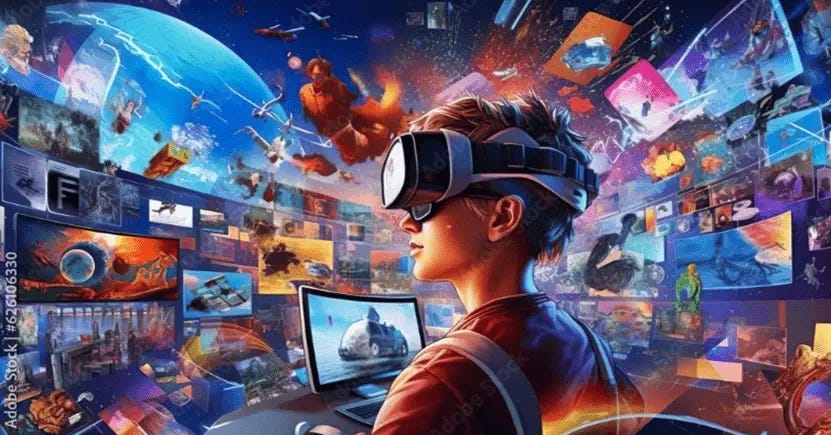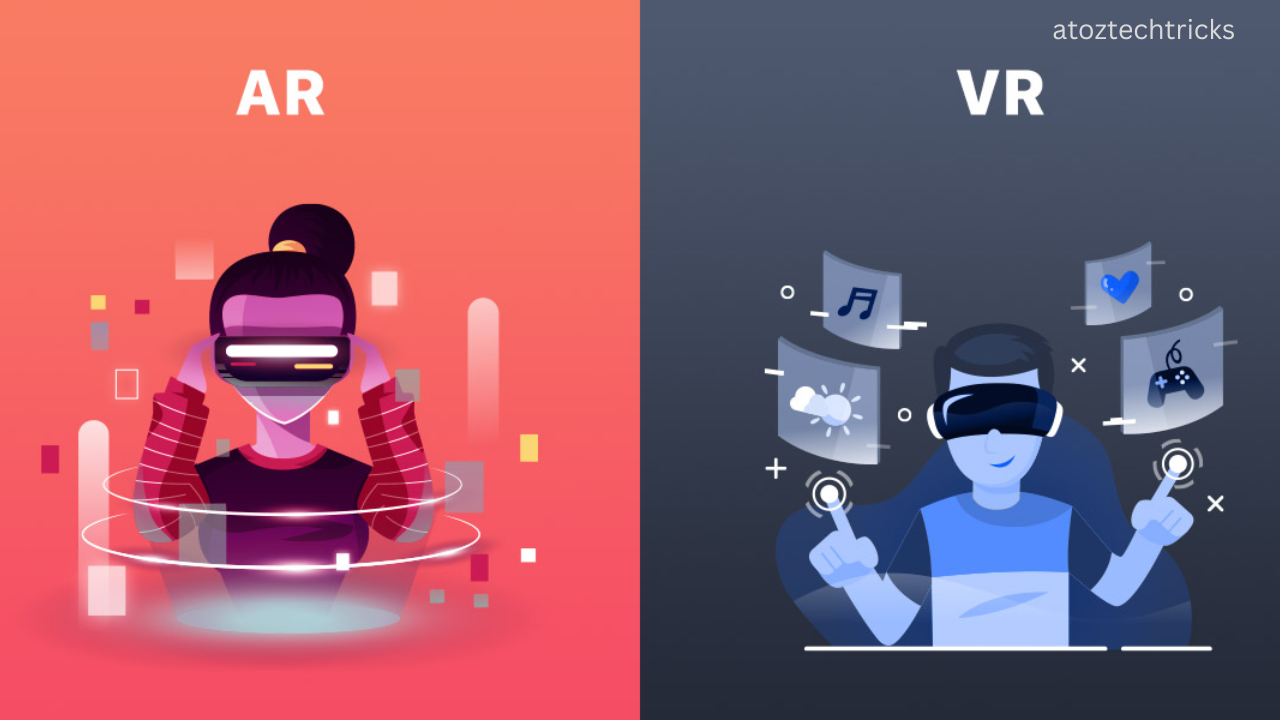The Rise of Virtual and Augmented Reality: Transforming Experiences in the Digital Age
Virtual Reality (VR) and Augmented Reality (AR) have emerged as transformative technologies, significantly altering how we interact with digital content and the real world. These immersive technologies are revolutionizing various sectors, from entertainment and education to healthcare and business. In this article, we will explore the key aspects of VR and AR, their applications, and their potential future impact.
Understanding Virtual Reality (VR)
Virtual Reality creates a fully immersive digital environment that simulates a real or imagined world. Using specialized hardware such as VR headsets, users are transported into a 3D environment where they can interact with virtual objects and surroundings as if they were real. Key components of VR include:
- Head-Mounted Displays (HMDs): These are wearable devices that cover the eyes and provide stereoscopic visuals. Examples include the Oculus Rift, HTC Vive, and PlayStation VR.
- Motion Controllers: These devices allow users to interact with the virtual environment by tracking their hand movements and providing haptic feedback.
- Tracking Systems: Sensors and cameras track the user’s head and body movements to adjust the virtual environment in real-time, enhancing immersion.
Applications of Virtual Reality
- Gaming and Entertainment: VR has transformed the gaming industry by offering deeply immersive experiences. Games like “Beat Saber” and “Half-Life: Alyx” provide players with a sense of presence and interactivity that traditional gaming platforms cannot match.
- Education and Training: VR is used for educational simulations, such as virtual field trips, medical training, and industrial skills training. For instance, medical students can practice surgeries in a risk-free virtual environment, enhancing their skills before working with real patients.
- Healthcare: VR is utilized for pain management, exposure therapy, and rehabilitation. Virtual environments can help patients with PTSD confront their fears in a controlled setting or aid in physical therapy by engaging them in interactive exercises.
- Real Estate and Architecture: Real estate agents and architects use VR to create virtual tours of properties and buildings, allowing clients to explore spaces before they are physically constructed or visited.
- Social Interaction: VR platforms like Facebook Horizon and AltspaceVR offer virtual meeting spaces where users can interact with others through avatars, attend events, and collaborate in real time.

Exploring Augmented Reality (AR)
Augmented Reality overlays digital information onto the real world, enhancing users’ perception of their environment. Unlike VR, AR does not create a fully immersive experience but rather adds digital elements to the physical world. Key components of AR include:
- Smartphones and Tablets: These devices use their cameras and screens to display augmented content. Popular apps like Pokémon GO use AR to integrate digital characters into the real world through the device’s camera.
- AR Glasses: Wearable devices such as Microsoft HoloLens and Google Glass project digital information onto the user’s field of view, allowing them to interact with both physical and virtual elements simultaneously.
- AR Development Platforms: Tools like ARKit (for iOS) and ARCore (for Android) enable developers to create AR experiences by providing frameworks for spatial mapping and object tracking.
Applications of Augmented Reality
- Retail and Shopping: AR enhances the shopping experience by allowing customers to try on virtual clothes, visualize how furniture will look in their homes, or access detailed product information by scanning items with their smartphones.
- Navigation and Travel: AR navigation apps provide real-time directions and information about landmarks by overlaying navigation cues onto the user’s view. This feature is particularly useful for tourists exploring unfamiliar areas.
- Healthcare and Medicine: AR assists in medical procedures by providing surgeons with real-time data and visualizations. For example, AR can project a patient’s anatomy onto their body, aiding in precision during surgery.
- Education and Training: AR enhances learning experiences by providing interactive and engaging content. Educational apps can overlay information on textbooks, create interactive simulations, or visualize complex concepts in 3D.
- Maintenance and Repair: AR guides technicians through complex repair and maintenance tasks by overlaying step-by-step instructions and highlighting components that need attention. This application improves accuracy and reduces the time required for repairs.
The Use of VR/AR in Entertainment: Transforming the Industry
The Intersection of VR and AR
While VR and AR are distinct technologies, they often overlap and complement each other in various applications. For example:
- Mixed Reality (MR): MR combines elements of VR and AR to create interactive experiences where digital and physical objects coexist and interact. Devices like Microsoft HoloLens enable MR by blending virtual objects with the real world.
- VR/AR Collaboration: Some applications use VR and AR together to enhance user experiences. For instance, a remote expert might use AR to guide a technician through a repair while the technician wears a VR headset to receive detailed instructions.
Challenges and Opportunities
Both VR and AR face challenges that need to be addressed for widespread adoption and effectiveness:
- Cost and Accessibility: High-quality VR and AR hardware can be expensive, limiting access to these technologies. As technology advances, costs are expected to decrease, making VR and AR more accessible to a broader audience.
- Content Creation: Creating compelling and immersive content for VR and AR requires significant expertise and resources. Developing tools and platforms that simplify content creation can drive innovation and expand the range of available experiences.
- Privacy and Security: AR applications that collect and process data about users’ surroundings raise concerns about privacy and security. Ensuring robust data protection measures and transparent policies is crucial to address these concerns.
- Health and Safety: Prolonged use of VR can lead to issues such as motion sickness or eye strain. Developers and manufacturers are working on solutions to mitigate these effects and promote safe usage practices.

The Future of VR and AR
The future of VR and AR holds exciting possibilities as technology continues to evolve:
- Improved Hardware: Advances in hardware, such as lighter and more comfortable headsets with higher resolution displays, will enhance the immersive experience of VR and AR. Developments in haptic feedback and tracking systems will further refine interaction and realism.
- Integration with Artificial Intelligence (AI): AI will play a crucial role in making VR and AR experiences more intelligent and adaptive. AI algorithms can enhance object recognition, generate realistic virtual environments, and personalize interactions based on user preferences.
- Expanded Applications: VR and AR will continue to find new applications across various industries. Innovations in healthcare, education, and entertainment will drive the adoption of these technologies, creating novel ways to engage and interact with digital content.
- Social and Collaborative Experiences: The development of social VR and AR platforms will facilitate more immersive and interactive ways for people to connect, collaborate, and share experiences. Virtual events, meetings, and social gatherings will become more common and accessible.
- Enhanced User Interfaces: Future VR and AR systems will feature more intuitive and natural user interfaces, such as gesture recognition and brain-computer interfaces. These advancements will make it easier for users to interact with virtual content and control their experiences.
Revolution of VR and AR in Education: Transforming Learning Experiences
Virtual Reality and Augmented Reality are reshaping the way we interact with digital content and the world around us. While VR creates fully immersive digital environments, AR enhances our perception of reality by overlaying digital information. Both technologies have transformative applications across various sectors, including entertainment, education, healthcare, and business. As technology advances, VR and AR will continue to evolve, offering new and innovative experiences that will shape the future of digital interaction. Embracing these technologies and addressing the challenges they present will pave the way for a more immersive and connected world.





Post Comment